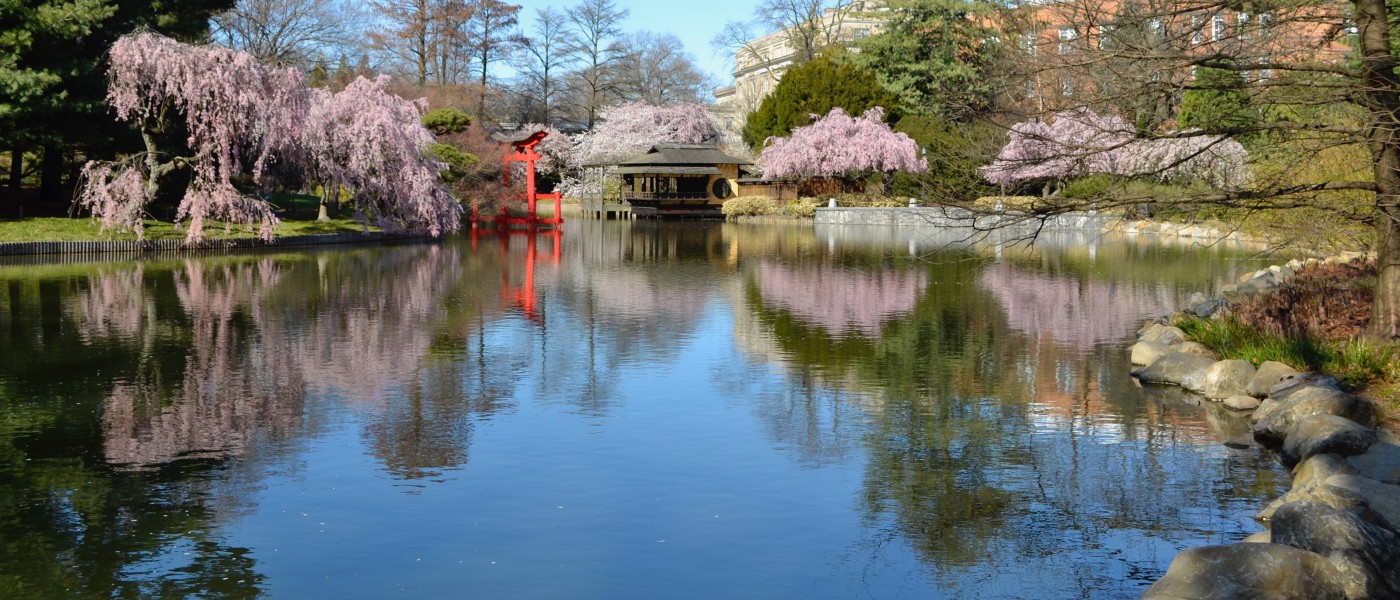Free Virtual Tour Resources for Teachers: Japanese Garden
This virtual visit to Brooklyn Botanic Garden's Japanese Hill-and-Pond Garden is an immersive, meditative experience that captures the essence of early spring in the Japanese Garden. Students will follow a path that winds around a pond and over hills to reveal a new view and sensory experience of the garden at every turn.
Extend the lesson with pre-visit activities, guiding questions during the viewing, and post-visit explorations.
If you need assistance with these resources, please contact [email protected].
Introduction to the Japanese Hill-and-Pond Garden
Brooklyn Botanic Garden’s 1915 Japanese Hill-and-Pond Garden is one of the oldest Japanese-inspired gardens outside Japan and the first built in a United States public botanic garden. A combination of Japanese and American aesthetics, BBG’s Japanese Garden was created by Takeo Shiota and features hills, a waterfall, a pond, carefully placed rocks, and an island, all constructed. These elements mirror Japan’s natural environment: The rocky shoreline edging the pond reflects Japan’s rocky coastline and the gentle hills evoke Japan’s mountainous landscape.
Gardens are created by people for people. All their elements are chosen with care and purpose. The wooden bridges, stone lanterns, viewing pavilion, torii, and Shinto shrine are beautiful in appearance, authentically crafted, and evoke cultural and spiritual meaning. The torii, a gateway that signifies the presence of a shrine, is a replica of one that stands in the ocean in Miyajima, Japan. It bears the inscription Daimyojin, which translates as “spirit of light.” Many of the structural elements and plants used in this garden have a symbolic meaning.
The Japanese Hill-and-Pond Garden is meant to be experienced and admired in all four seasons of the year. There are many evergreen plants, including pines and rhododendrons, that maintain a green panorama all year long. Other plants, including the Japanese maples whose leaves pop with autumn color and the cherry trees whose cascades of pastel blossoms welcome the spring, stand out spectacularly against the backdrop of evergreens. The maple leaves drop, the cherry flowers gradually lose their petals, marking the passage of one season into the next. Their beauty is provocative and emotive yet ephemeral.
The pathways that wind through the Japanese Garden, inviting visitors to travel gradually through the landscape, were planned so that different views of the pond, the hills, and the other areas of the garden are revealed at every turn. Though the landscape is constant, our perspective and experience of it are ever-changing.
Virtual Visits
As students watch this 18-minute video, stop a few times in different locations and take notes of their observations. The Viewing Guide offers time-stamped discussion prompts. Choose whether to display closed-captions and select the full-screen option before screen sharing and playing the video on your streaming platform.
If Time Is Limited
This 3½-minute video shares many of the sights and sounds of the Japanese Garden in spring. There is not a time-stamped viewing guide, however, you may find the guiding questions useful as discussion prompts.
Learn More
Profile: Japanese Hill-and-Pond Garden
Blog: BBG’s Japanese Hill-and-Pond Garden: A History


